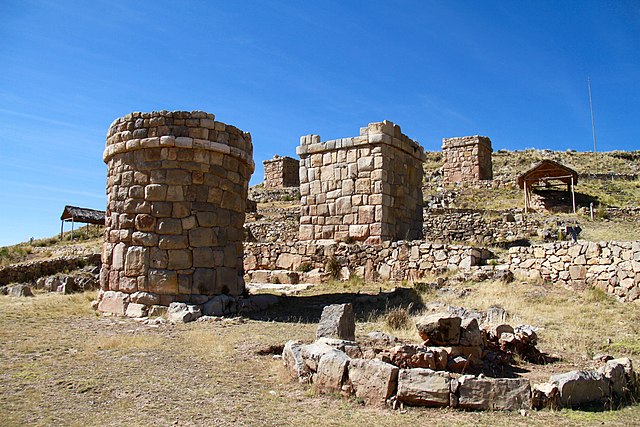Cutimbo, a pre-Columbian archaeological site, stands on a volcanic plateau in the Puno region of Peru. Known for its chullpas, or funerary towers, it reflects the complex funerary practices of the region’s past inhabitants. The site offers a window into the Andean cultures, particularly the Collas and the Incas. Its strategic location and construction suggest it was a place of both ceremonial and strategic importance.
Get your dose of History via Email
Historical Background of Cutimbo
Researchers discovered Cutimbo’s significance in the 20th century. Yet, local communities have long known about it. The site’s creators remain a mystery, but evidence points to the Colla people. Later, the Incas inhabited the area, leaving their mark. Cutimbo has not been the scene of major historical events. However, it provides insights into the daily and spiritual lives of its builders.
The Collas, a powerful Aymara-speaking kingdom, likely built the initial structures. They thrived in the region before the Inca conquest. The Incas, who later dominated the area, expanded the site. They incorporated it into their vast empire. The chullpas at Cutimbo showcase a blend of Colla and Inca architectural styles.
Spanish colonial documents mention the site, but they do not detail its discovery. Local oral histories have preserved its legacy. The site has not undergone extensive archaeological excavation. This has left many aspects of its history shrouded in mystery.
Cutimbo’s chullpas served as tombs for the elite. They stand as a testament to the region’s complex social hierarchy. The site’s location, overlooking the surrounding landscape, suggests it had a strategic purpose as well.
Despite its historical significance, Cutimbo remains less known than other Peruvian archaeological sites. This obscurity has helped preserve its structures. It has also limited our understanding of its full historical context.
About Cutimbo
Cutimbo’s chullpas are its most striking feature. These towers vary in shape and size, indicating different periods of construction. The largest ones reach up to 12 meters in height. They display intricate stonework typical of pre-Columbian Andean cultures.
The builders used local andesite stone to construct the chullpas. They shaped the stones with remarkable precision. The towers feature decorative elements, such as carvings of animals and geometric patterns. These motifs are significant in Andean cosmology.
The site also includes cave paintings and petroglyphs. These artworks provide insights into the spiritual beliefs of the site’s inhabitants. The paintings depict animals, human figures, and symbols. They are valuable to understanding Andean iconography.
The layout of Cutimbo suggests it was a ceremonial center. The chullpas are strategically placed. They align with natural features and celestial events. This alignment indicates the importance of astronomy and landscape in Andean culture.
Despite its elevation, the site is accessible via a series of ancient paths. These paths connect Cutimbo to other important sites in the region. They highlight the site’s role in a broader cultural and trade network.
Theories and Interpretations
Scholars have proposed various theories about Cutimbo’s use. Most agree it was a funerary site for the elite. Yet, its exact purpose remains a topic of debate. Some suggest it also served as an observatory or a place of worship.
The chullpas’ alignment with celestial bodies has led to theories about astronomical functions. Researchers believe the site played a role in calendrical systems. The Incas were known for their sophisticated understanding of astronomy.
The site’s petroglyphs and cave paintings are open to interpretation. They may represent mythological beliefs or historical events. Matching these images to known Andean myths has proven challenging.
Radiocarbon dating has helped establish a timeline for Cutimbo’s occupation. The results suggest the site was in use from around 1000 AD to the Spanish conquest. The methods used include analyzing organic materials found within the chullpas.
Despite these findings, many mysteries about Cutimbo persist. Ongoing research and future excavations may provide further insights. For now, the site remains an enigmatic piece of Andean history.
At a glance
Country: Peru
Civilization: Colla Kingdom
Age: Approximately 1000 AD to the Spanish conquest
Conclusion and Sources
The information in this article has been obtained from the following reputable sources:

